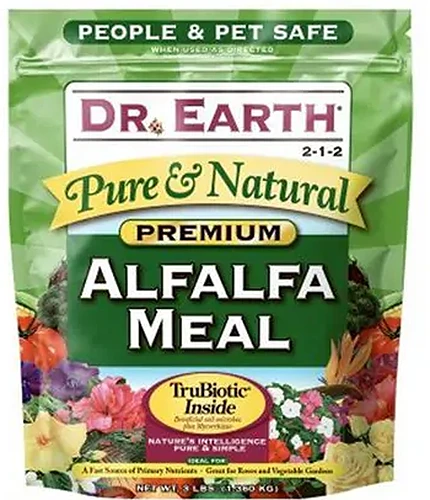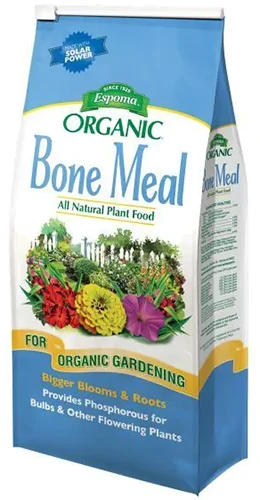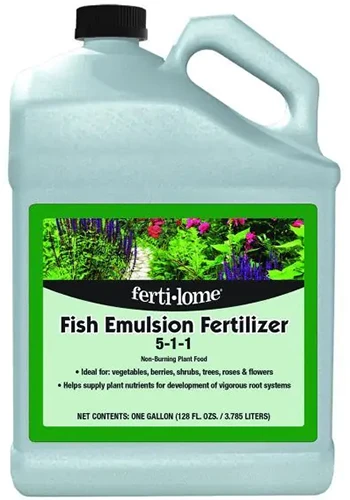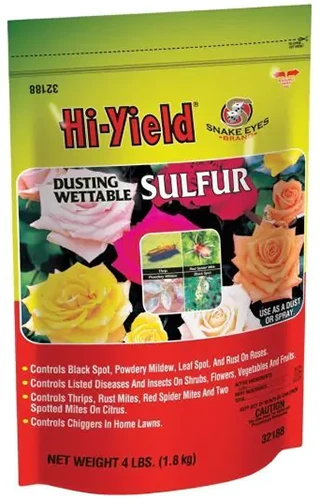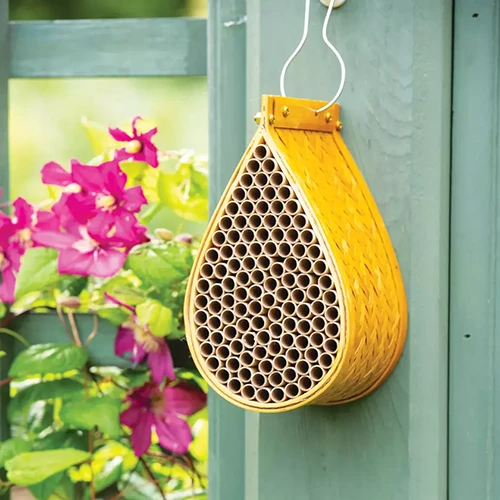Does the idea of starting an organic garden seem complicated or daunting?
You’ll have to ditch convenient products like synthetic fertilizers and pesticides, but switching to natural methods is probably a lot easier than you think. And the benefits are numerous.
Garden-fresh foods already taste amazing, and when grown organically, you have complete control over the cultivation process – so you can rest easy about what you and your loved ones are consuming.
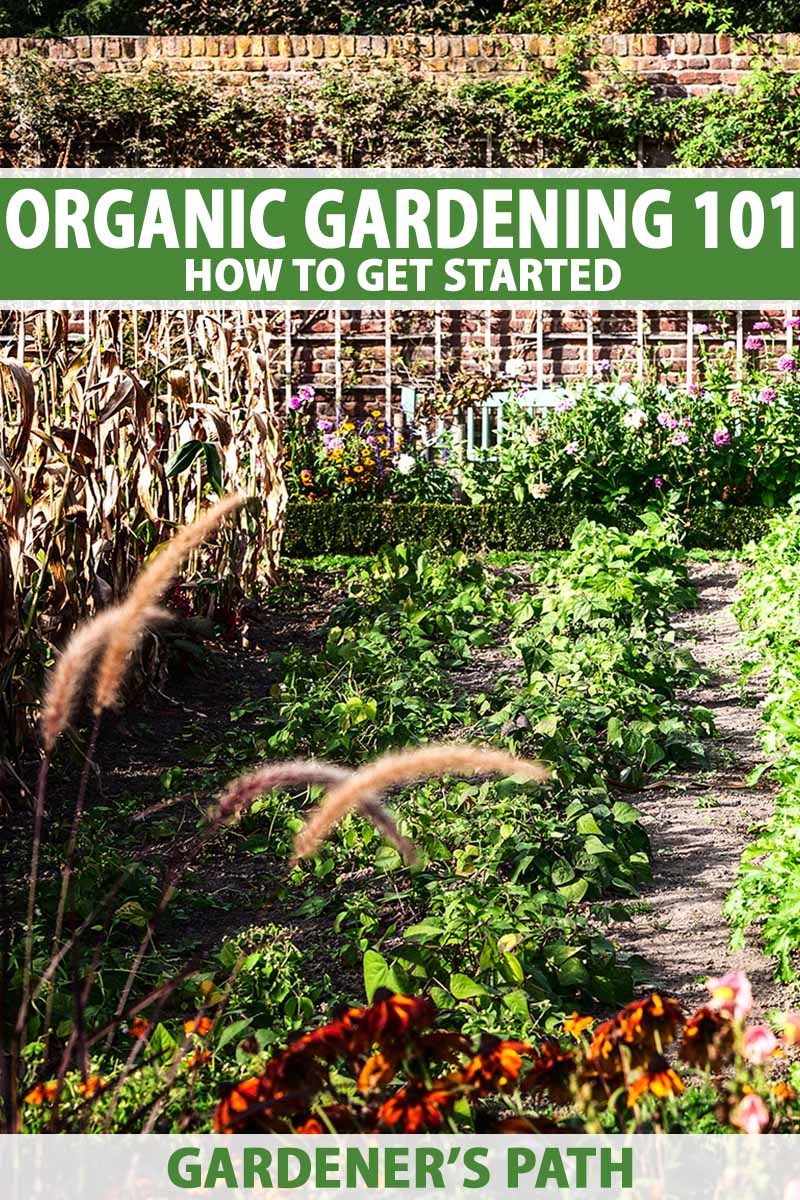
We link to vendors to help you find relevant products. If you buy from one of our links, we may earn a commission.
With no harmful chemicals or synthetics, your garden becomes a glorious haven for beneficial insects, birds, helpful pollinators, and small mammals.
And your children or grandkids can safely roam the grounds without having to avoid areas treated with harsh substances.
You don’t have to make any extreme lifestyle changes like wearing vibrantly colored robes or chanting while you plant – it just takes a little common sense and organization.
And with each flower sniffed or pea picked, you’ll feel increasingly confident about making a decision that benefits you, your family, and your local biosphere.
Whether you’re an experienced conventional gardener or a budding green thumb, a few basics are helpful when you’re just getting started.
So let’s get some dirt under our nails and jump into how to get started with organic gardening!
Here’s what you’ll find ahead:
What You’ll Learn
What Is Organic Gardening?
Organic gardening is a simple practice and complementary mindset that works with nature to produce flowers, fruits, herbs, ornamentals, and vegetables without the use of synthetic materials.

With this natural method, you create your own diverse ecosystem for healthy foods, beautiful flowers, and a safe, regenerative habitat that welcomes beneficial insects, birds, and other garden friendlies.
It provides holistic and sustainable methods to build and conserve nutrient-rich soils as well as natural pest management practices that have favorable, trickle-down effects locally and on a larger scale.
And it just feels good.
With the damning results of our collective, rapacious ways becoming painfully obvious in Mother Nature’s raging climatic changes, going green is a positive practice with long-reaching benefits.
And few things warm the heart more than witnessing your progeny eschewing damaging, get-it-now results in favor of long-term practices that benefit all – it’s a gift that keeps on giving!
Now let’s dig into the practices needed for organic gardening.
Build Your Soil
A foundational element to any garden, healthy soil has a range of vital nutrients that supports animal, microbiota, and plant life while being disease- and pest free.
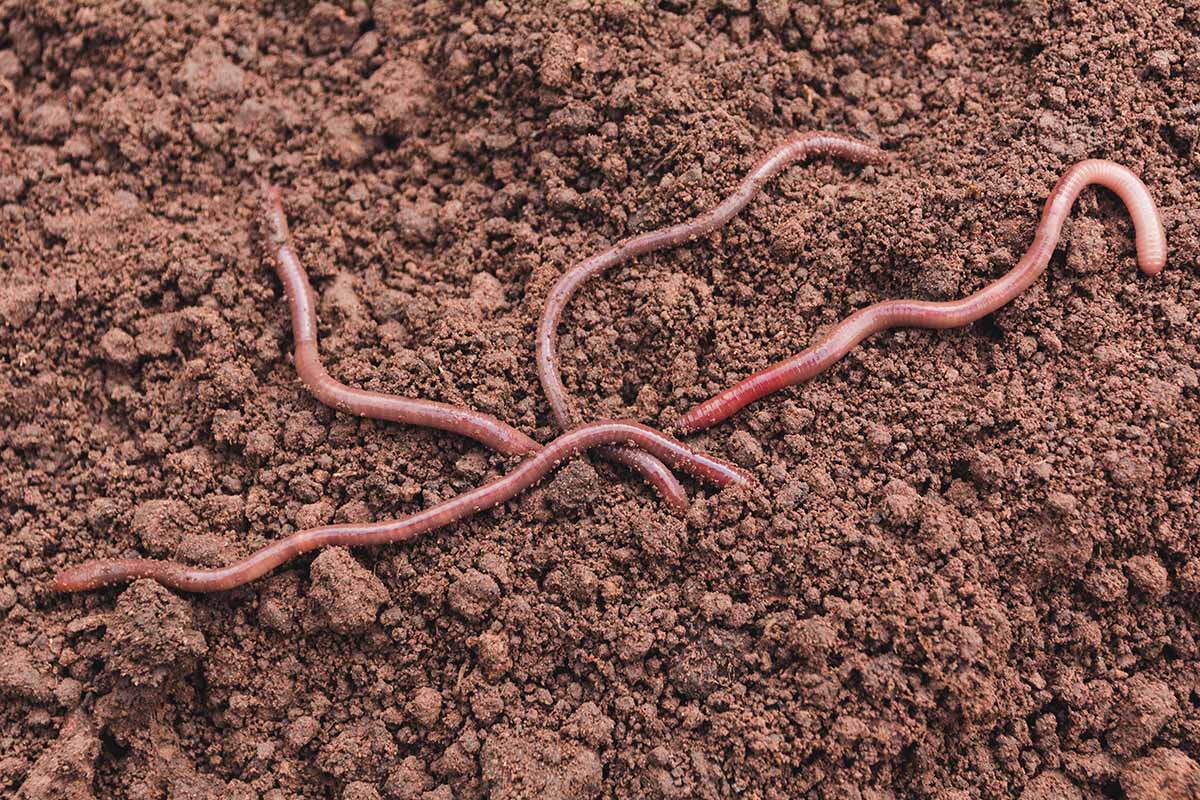
It has four main components – minerals, water, air, and organic matter – and is sustained without the use of artificial supplements.
Nutritious soil also contains a variety of organisms that make it a “living” system, such as actinomycetes, algae, bacteria, fungi, earthworms, and protozoa – all of which are key to successful organic gardening.
Soil structure refers to the natural particles that make up the soil itself, such as clay, sand, or silt – and it’s the particle size that determines characteristics like compaction, drainage, and porosity.
To learn the exact composition of your soil, and what it may be lacking or have too much of, a soil test is recommended. To learn more, this guide on soil testing has the info you need.
Soil functions best with a crumbly texture or tilth. This allows roots to spread freely and also provides the easy transportation of food, oxygen, and water.
It should also be well-draining, allowing excess moisture to disperse as it percolates down through the layers. But it needs to hold water long enough for the plants to absorb it as well.
And because growing plants depletes soil of nutrients and compacts the structure, it needs to be regenerated yearly through the addition of natural materials.
Many elements can raise the amount of natural matter in your soil and increase mineral content too.
Look to materials such as coconut coir, aged compost, earthworm castings, grass clippings, kelp or seaweed, shredded leaves, well-rotted animal or mushroom manure, green manure or cover crops, mulch materials like pine needles, untreated sawdust, and straw, or peat moss to build healthy soil.
Working in the likes of blood, bone, or cotton seed meals in pellet form is also an easy way to increase primary nutrients such as nitrogen, potassium, and phosphorus.
And the addition of landscape sand, pea gravel, perlite, or stone chips is an excellent way to improve drainage.
A neutral soil pH, which stands for potential of hydrogen, will serve most plants most of the time. The pH is measured on a scale of 1 to 14, with 1 being extremely acidic and 14 extremely alkaline. At the middle of the scale, a 7 is the happy neutral spot.
To decrease acidity, work in materials such as agricultural lime. And alkalinity can be decreased with the addition of elemental sulfur or aluminum sulfate.
Because the majority of soil life and plant roots are located in the top six to eight inches of soil, it pays off to concentrate on building up this upper layer to a depth of about 12 inches.
Companion Planting
Companion planting is the simple practice of placing certain plants, like flowers, herbs, and vegetables, in close proximity to crops for the purposes of insect control, crop productivity, and pollination.

For biological pest control, you can plant companions to attract beneficial predator insects or for the repellent qualities of the essential oils in some plants.
To learn how to use companions, check out the scientifically backed benefits of companion planting.
Crop Rotation
An effective tool in preventing soilborne disease, insect infestations, and weeds, crop rotation is the smart practice of switching crops to different plots of soil for each growing season.
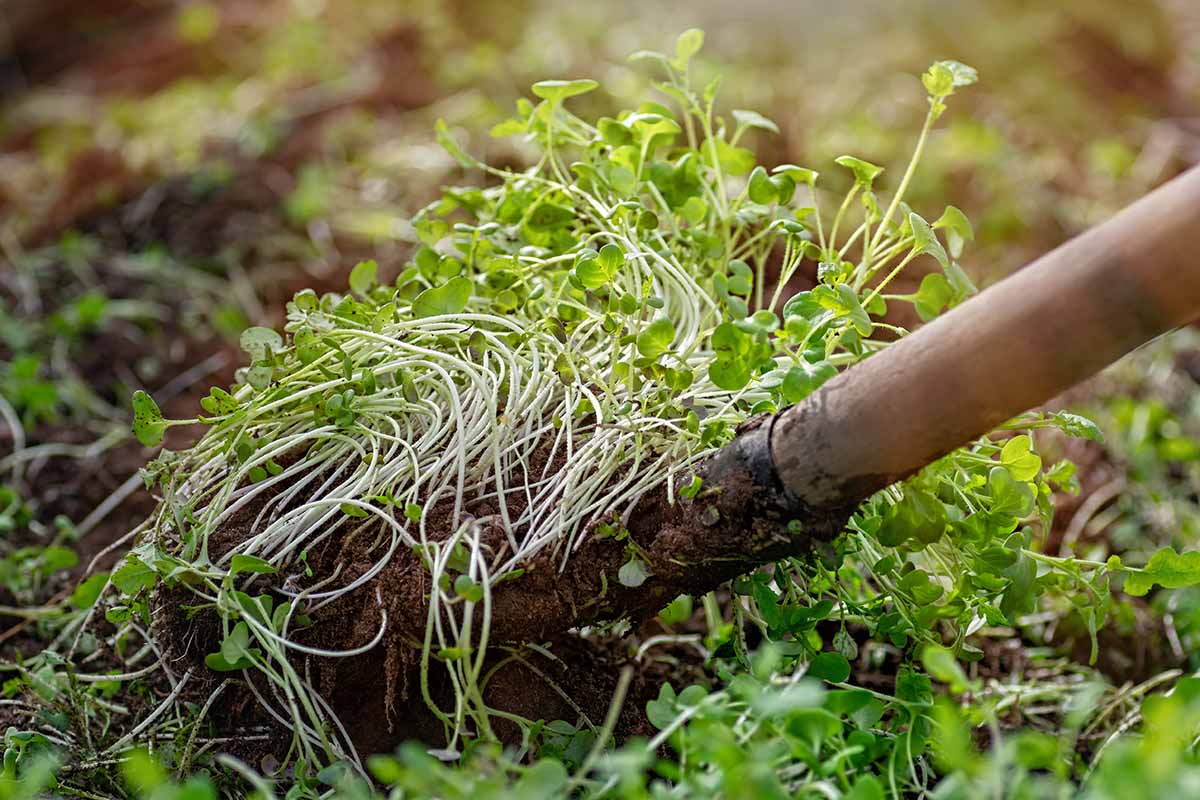
Successful crop rotation requires a little bit of planning, which is best done in winter in your garden journal.
For the healthiest soil and abundant crops, keep the following points in mind during your planning session:
- Grow annual crops for only 1 year in any one location, and don’t rotate back to the same spot for 3 to 4 years.
- Don’t follow crops with closely related species – i.e., avoid following a cabbage crop with kale.
- Use a deep-rooted crop, such as daikon radishes or carrots, as a regular part of the rotation sequence to keep the soil friable and avoid compaction.
- Follow a legume crop with one that requires high nitrogen – i.e. follow a crop of peas with one of leafy greens, like mustard.
- As part of your rotation, include cover crops that leave a lot of residue, like barley or wheat. Healthy plant residue improves microbial activity and nutrients in the soil’s surface.
Cover crops offer an excellent way to improve soil fertility and structure, and serve as an important component in successful crop rotation methods.
Read more on this fascinating practice in our guide to the art of cover cropping.
Fertilize Naturally
Another challenge for the green gardener is how to feed plants without the use of manufactured fertilizers that can have a negative environmental impact.
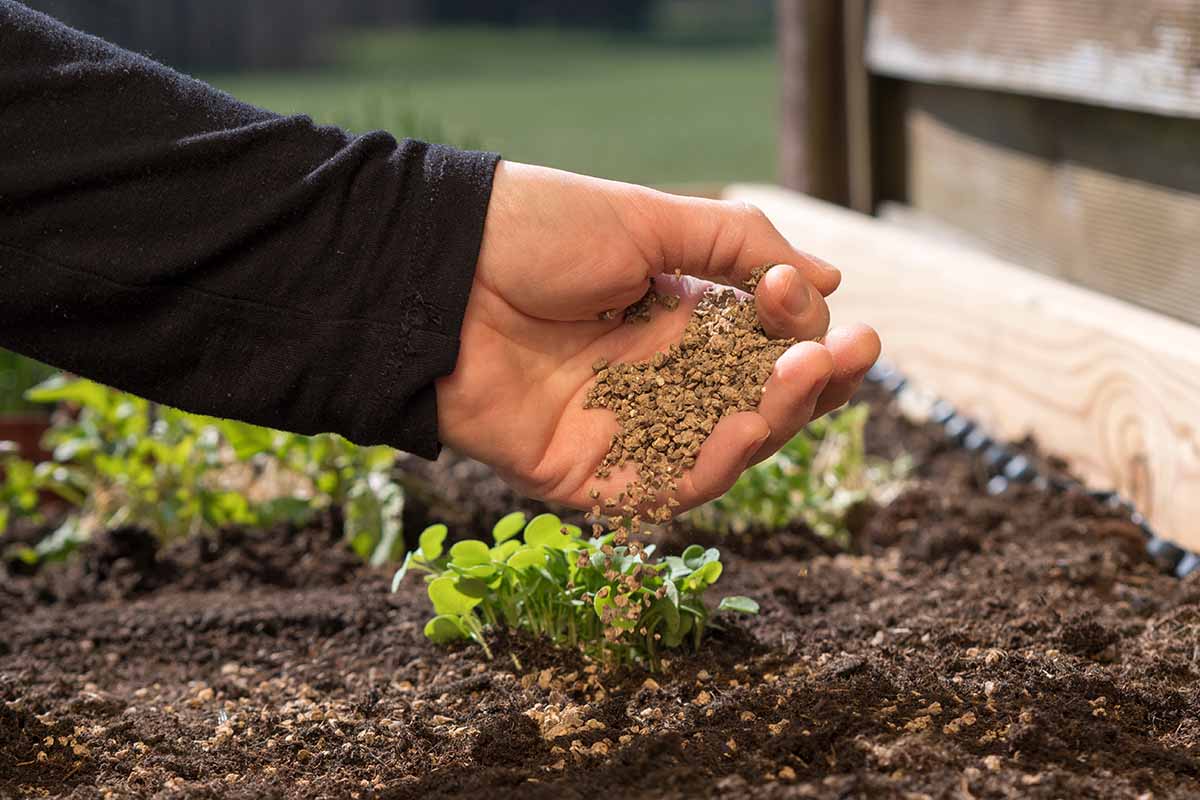
Not surprisingly, natural fertilizers are the solution because they feed plants with the primary macronutrients they need – nitrogen, phosphorus, and potassium (NPK) – plus important micronutrients as well.
Natural fertilizers in solid form are superb at building soil, as they increase tilth and improve soil structure while contributing to the garden’s overall good health.
They’re also sustainable and there’s plenty of them available. Let’s look at some of the more easily sourced materials to feed your plants and build your soil.
Animal Manure
The aged animal waste of herbivores makes an important soil amendment that increases organic matter and provides all the main nutrients of nitrogen, phosphorus, and potassium plus micronutrients.
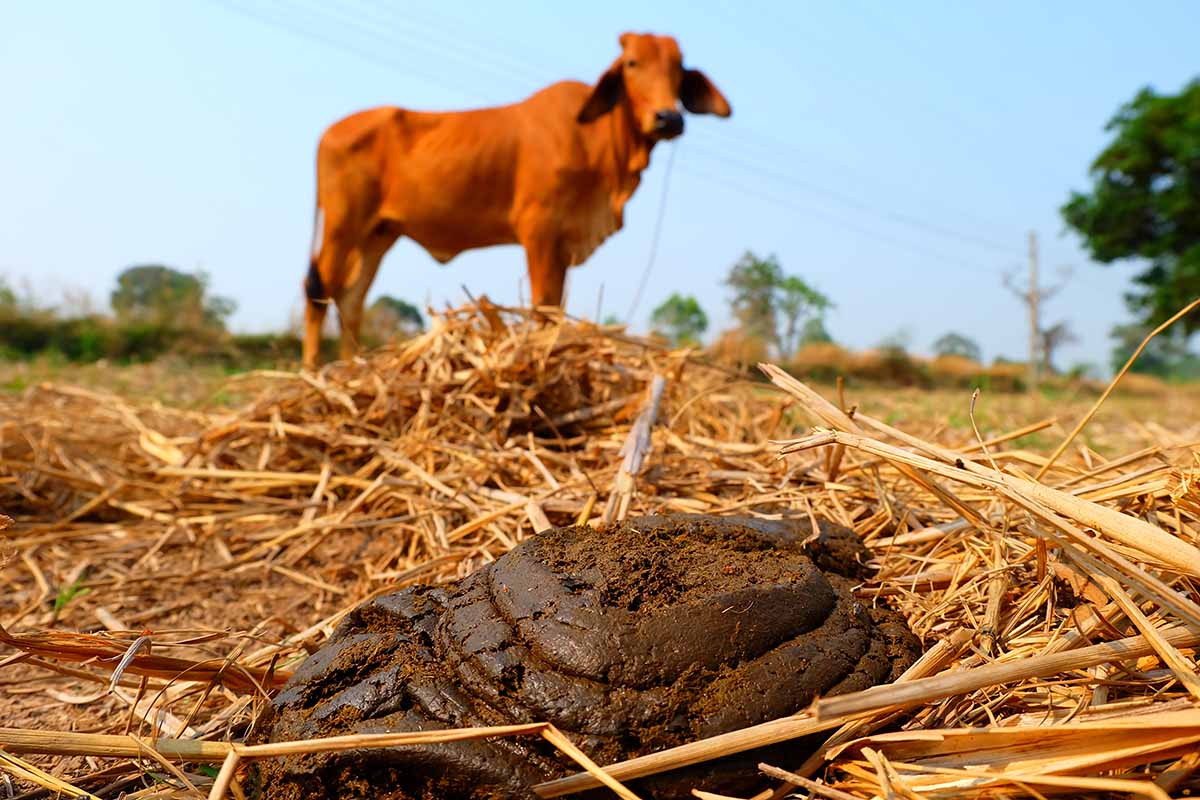
Manure works best when it’s worked into the soil where you’ll be planting and needs to be aged before it’s used – fresh manure is often too “hot” from high nitrogen levels and can burn plants.
- Chicken manure is high in nitrogen and should age for 6 to 12 months before using it in the garden.
- Cow, goat, sheep, and rabbit manures are lower in nitrogen and need to age for 4 to 6 months.
- Horse manure is nitrogen rich and should be aged for 4 to 6 months, but it also has the highest amount of weed seeds.
- Mushroom manure is a byproduct of mushroom farming. The fungi is typically grown in a base containing chicken or horse manure.
Cow manure and mushroom manure are readily available at garden centers. Other animal manures can usually be sourced from local farms.
Alfalfa Meal
Alfalfa meal is fine-milled into a powder that acts much like a cover crop, providing primary and secondary nutrients and improving soil structure.
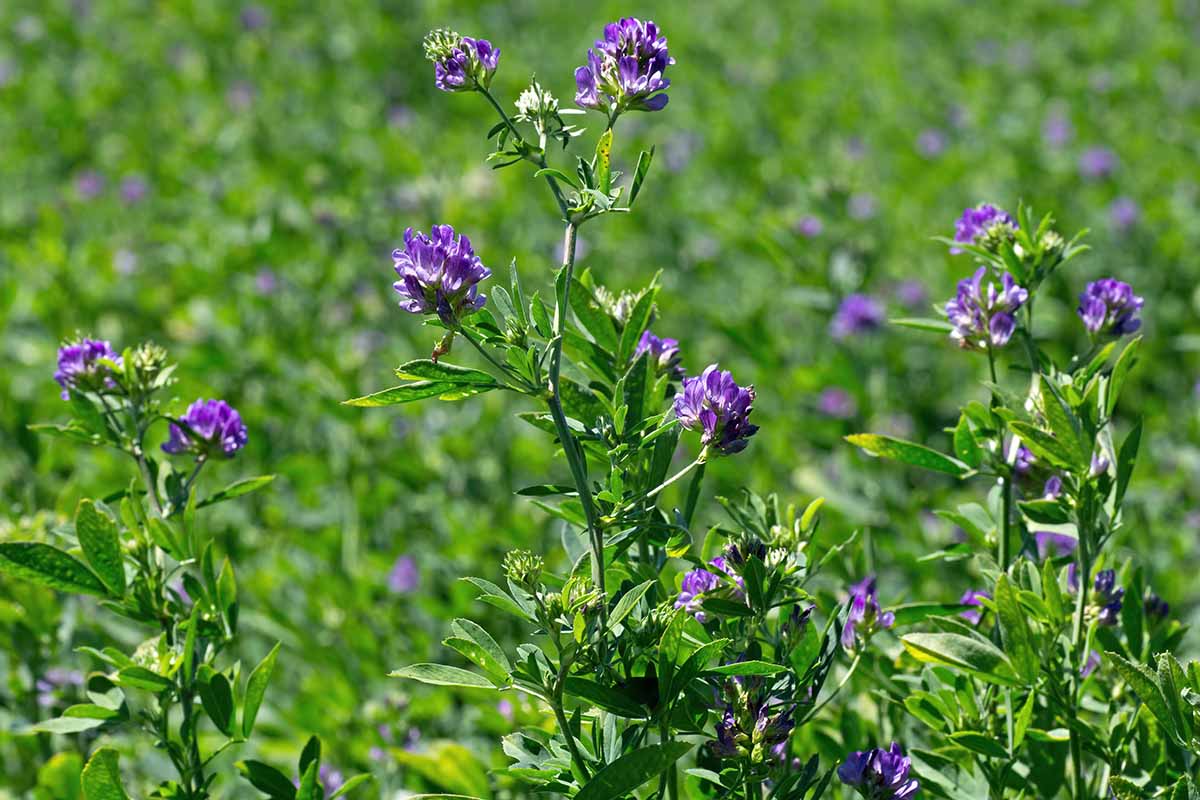
It contains equal amounts of nitrogen and potassium as well as triacontanol, a naturally occurring growth hormone that bolsters the growth rate of seedlings.
Alfalfa meal can be worked into the soil, or used as a mulch or compost additive.
Dr. Earth Pure & Natural Alfalfa Meal
Dr. Earth Pure & Natural Alfalfa Meal is available at Nature Hills.
Bone Meal
Bone meal is derived from steamed animal bones that are ground and processed into granular pellets or powder form.
A rich source of calcium and phosphorus, bone meal helps to promote strong, healthy root systems and improves flowering and fruit production.
Bone meal is widely available at garden centers. If you prefer to order online, you can find Espoma Bone Meal available in 24-pound bags from Nature Hills Nursery.
Blood Meal
A byproduct of meat packing plants, blood meal is a powder made from dried animal blood.
High in nitrogen, blood meal works well for growing leafy greens and is commonly applied to allium and brassica plants as well as nitrogen-depleted soil.
Down to Earth Blood Meal can be found in sizes ranging from one-half pound to 50 pounds at Arbico Organics.
Compost
Composting is the natural decomposition and recycling of natural, unprocessed materials into nutrient-rich garden fertilizer.
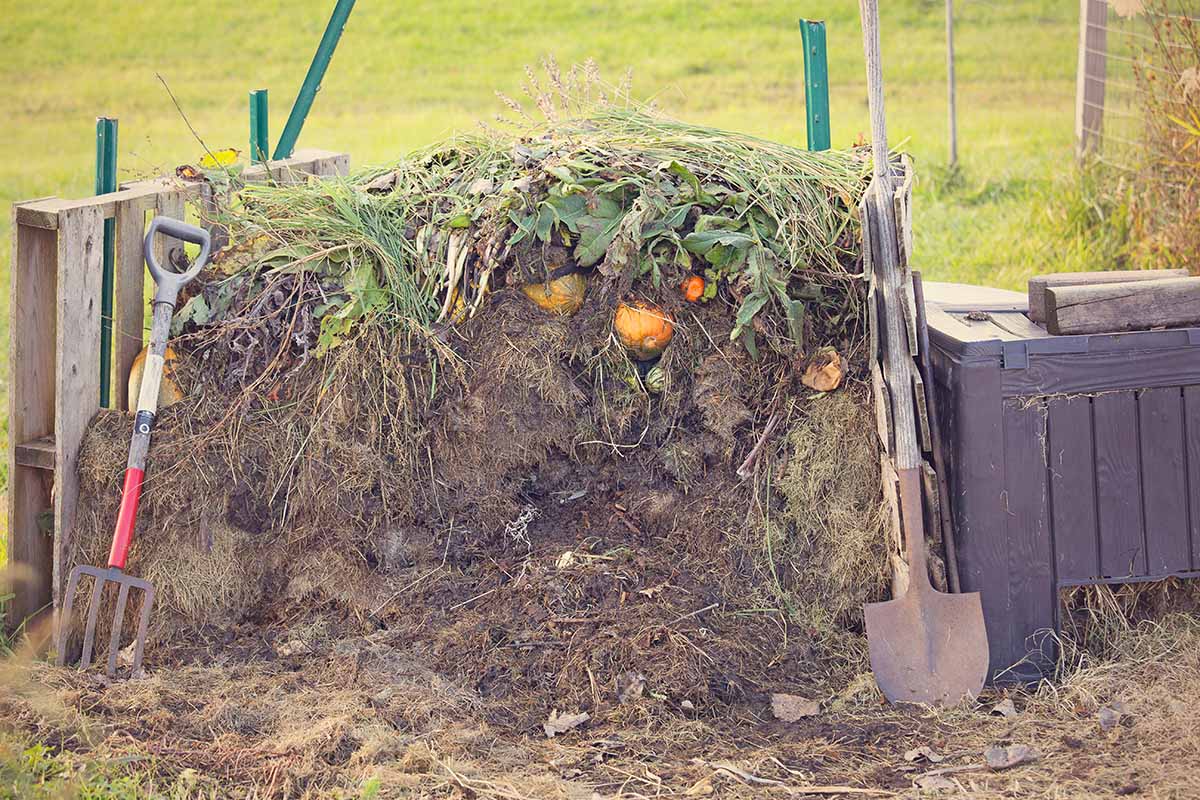
Compost that is collected in open piles, bins, or enclosed tumblers takes about one year to convert waste products like kitchen vegetable scraps, coffee grounds, and garden litter such as grass clippings and leaves into healthy, humus-rich soil.
Solid form compost can be worked into the soil or used as a topdressing, and it can also be brewed into a tea for use as a liquid fertilizer.
For more detailed info, read up on the basics of composting and how to make compost tea.
Cottonseed Meal
Cottonseed meal is a byproduct of cotton manufacturing and it has good amounts of both primary and secondary nutrients.
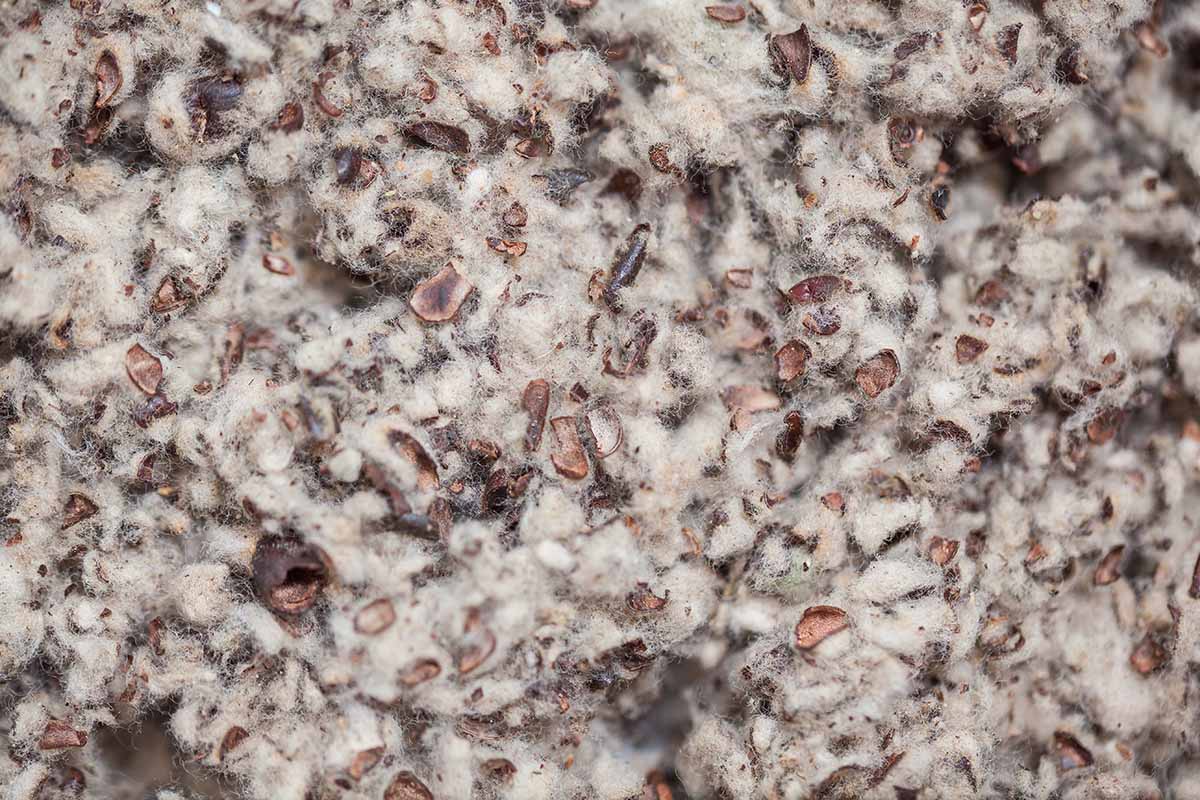
Naturally acidifying, it’s an excellent choice for feeding acid-loving plants like azaleas, blueberries, and camellias. It also helps root crops to develop over a long growing season and contributes to big, beautiful flowers.
And when saturated, it holds water well, making it a good soil amendment for retaining moisture in vegetable gardens.
Feather Meal
Feather meal is made of ground up feathers from poultry processing plants. Like blood meal, it provides high levels of nitrogen.
Fish Emulsion
Fish emulsion is a liquid concentrate made from fish and fish parts, which is diluted with water before applying to berries, flowers, fruits, herbs, and vegetables.
It provides a good source of burn-free nitrogen plus lower levels of phosphorus and potassium, as well as secondary nutrients like calcium, promoting steady growth and strong plants.
Fertilome Fish Emulsion Fertilizer
Fertilome Fish Emulsion Fertilizer is available in concentrate form in one-gallon jugs at Nature Hills Nursery.
Guano
Guano, or bat and bird manure, is collected from bat or bird habitats and dried into a powder or pellets that can be used to amend the soil or feed plants directly.
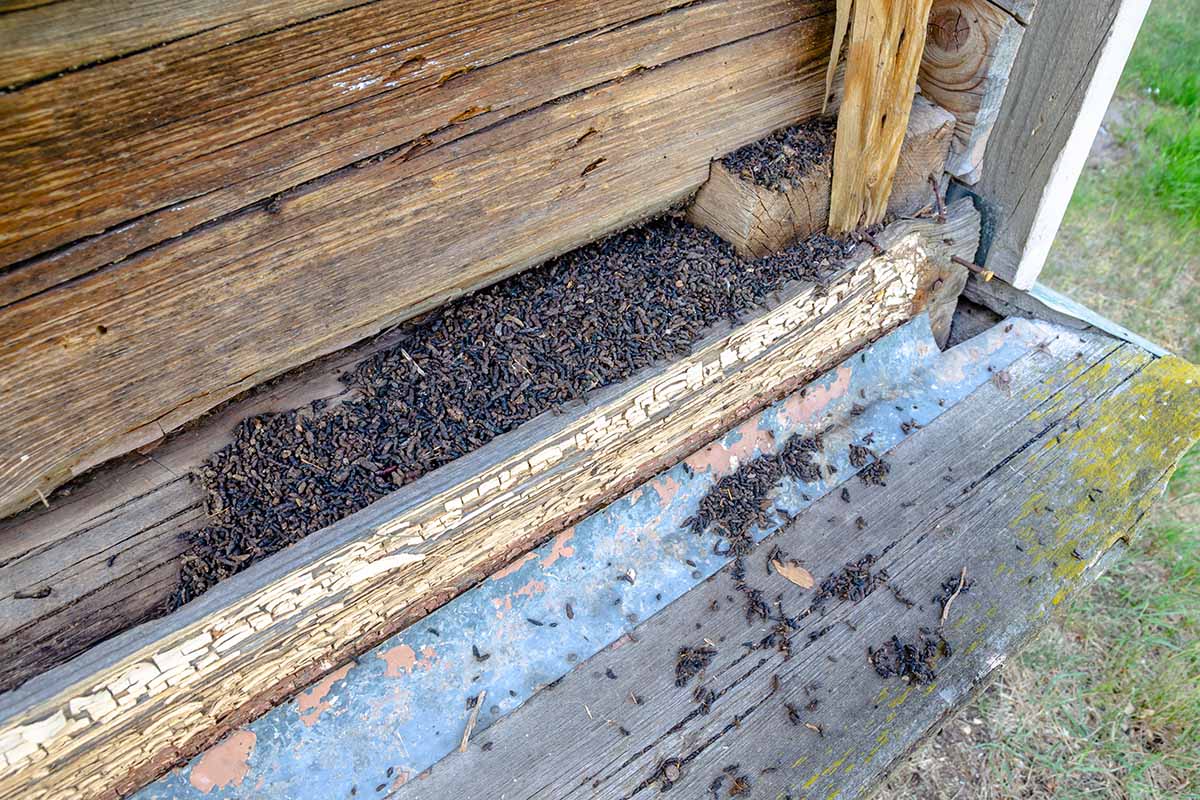
It has high levels of nitrogen and phosphorus, plus potassium, and promotes healthy fruiting or flowering plants with lush foliage.
Bat and bird guano is available at Arbico Organics.
Kelp Meal
Kelp (Ascophyllum nodosum) is a type of seaweed that’s dried and crushed into small chips for working into the soil, adding nutrients and improving tilth.

Kelp contains small amounts of the primary macronutrients (NPK) and is rich in a broad range of micronutrients, including calcium, copper, magnesium, sulfur, and zinc, promoting healthy growth and greater flower, fruit, and vegetable yields.
Seaweed meal is also rich in important minerals and made from species such as kelp and bladderwrack (Fucus vesiculosus).
You can find a good selection of kelp and seaweed meals at Arbico Organics.
Worm Castings
Worm castings, or worm manure, are produced in the process of vermiculture, which is the composting of organic plant matter by worms, primarily red wigglers.
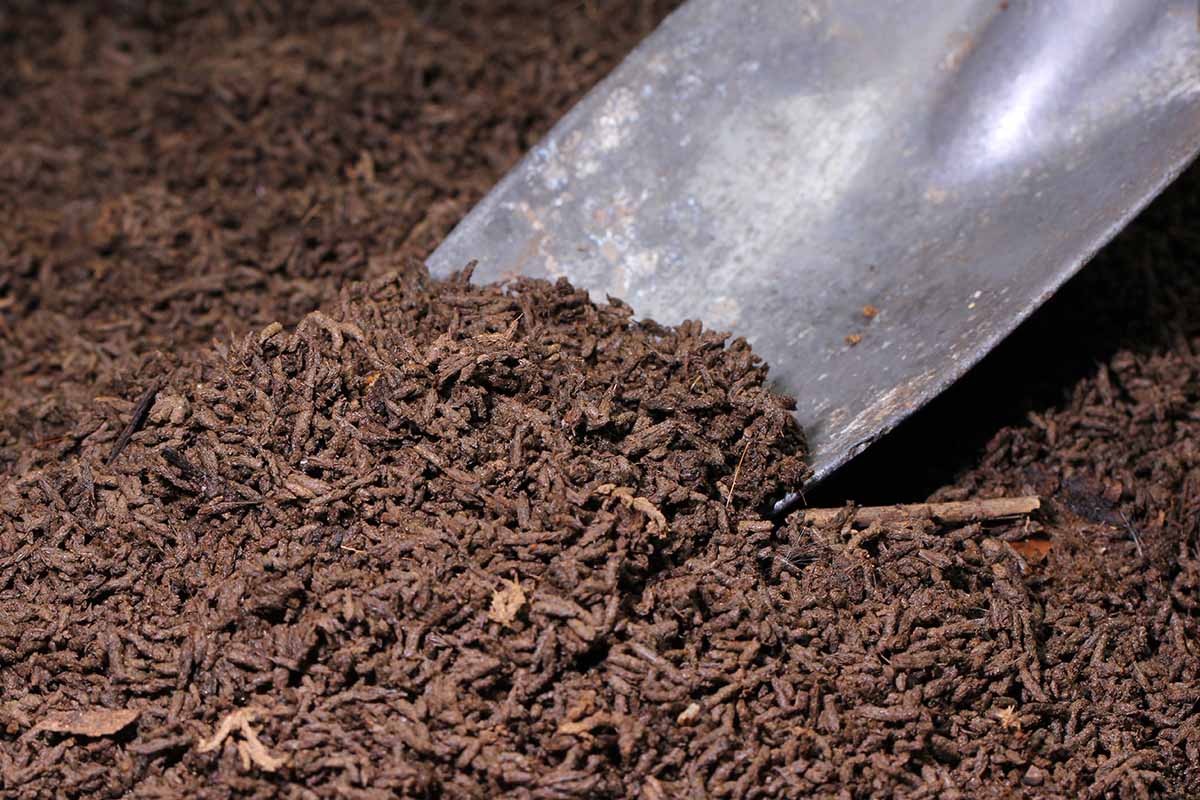
Rich in micronutrients such as calcium, copper, iron, magnesium, sulfur, and zinc, worm castings improve soil structure and also provide the primary nutrients nitrogen, phosphorus, and potassium in varying amounts.
To create your own vermicast supply, read up on how to start a worm farm at home.
Mulching Magic
Adding a summer mulch to the base of your crops is a sure way to reduce your workload.
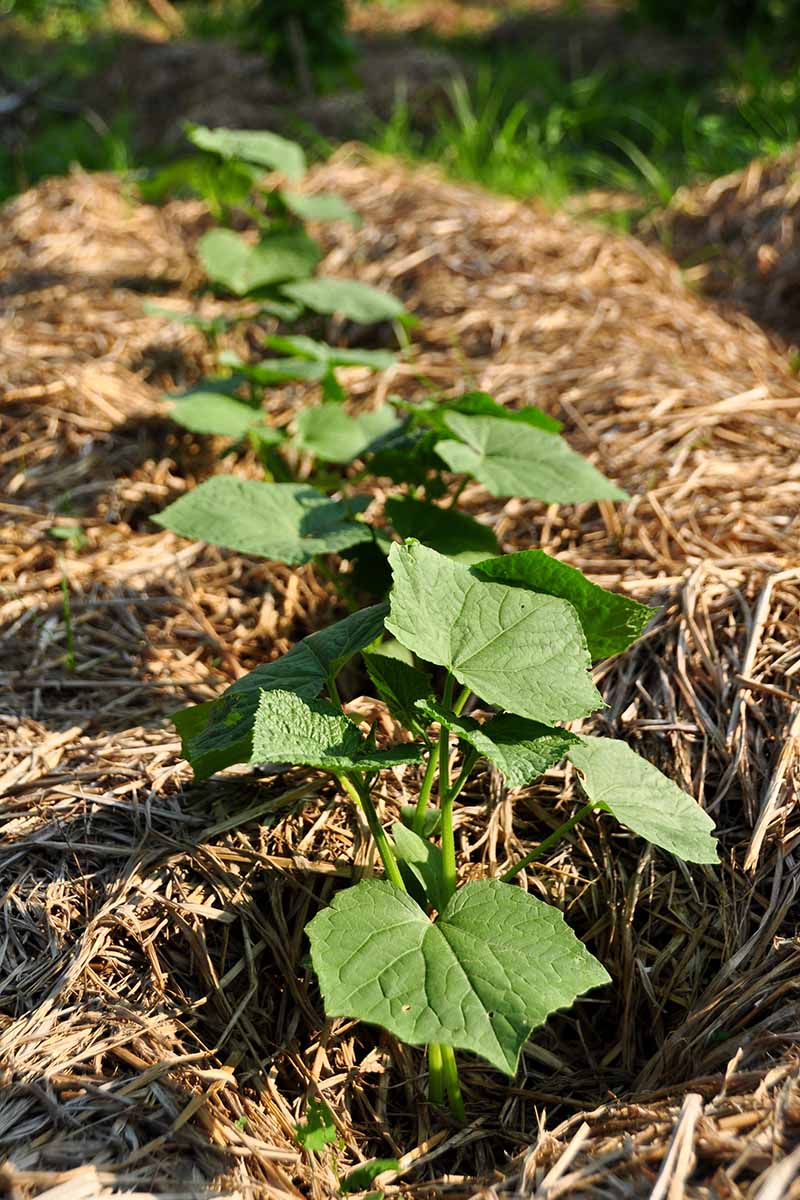
A two- to four-inch layer of natural mulch can help to keep roots cool in hot temperatures, retains soil moisture for longer periods by reducing evaporation, and helps to keep weeds down.
To benefit from the magic of mulching, in early summer apply materials such as ink-free cardboard, compost, leaf mold, pine needles, untreated sawdust, or straw to your garden beds and planters.
Pest Control
Perhaps the most challenging aspect of organic gardening is pest control.
Personally, I get choked up when the bugs eat more of my leafy greens than I do. And it can be mighty tempting to turn to chemical applications to rid plants of bacteria, fungal problems, and ravenous insects.
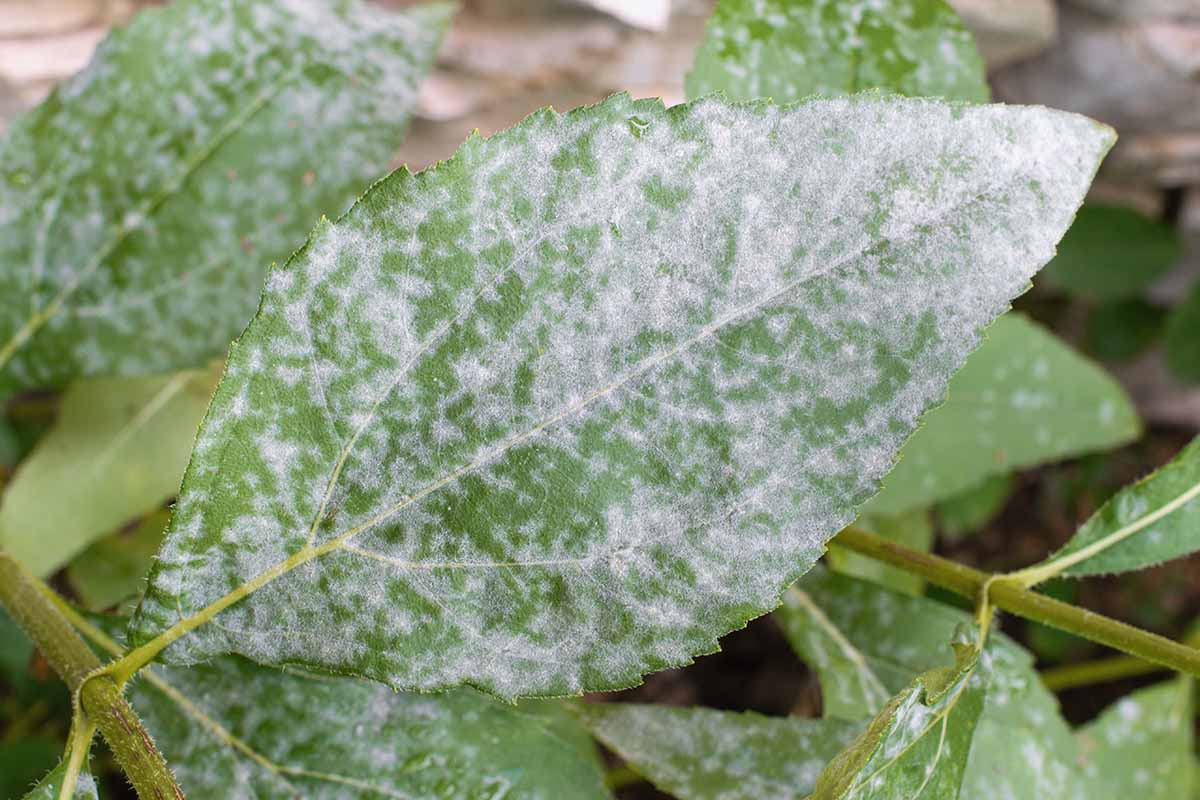
But there are safer workarounds. And it starts by accepting that a certain amount of blemishes and pest damage are going to occur in any naturally cultivated garden.
You can’t get rid of them all, but if you can live with a small percentage of your plants being lost to pests, you’ll be in a much happier place the next time you encounter damage – c’est la vie, the critters have to eat too!
Of course, you want to keep pest damage to a minimum. And during the growing season, you can employ a number of methods to tackle garden unfriendlies without the use of harsh synthetics.
Here’s a brief look at a few popular ones.
Beneficial Predatory Insects
Beneficial predatory insects provide natural pest control by capturing and eating problem bugs in a variety of growth stages.
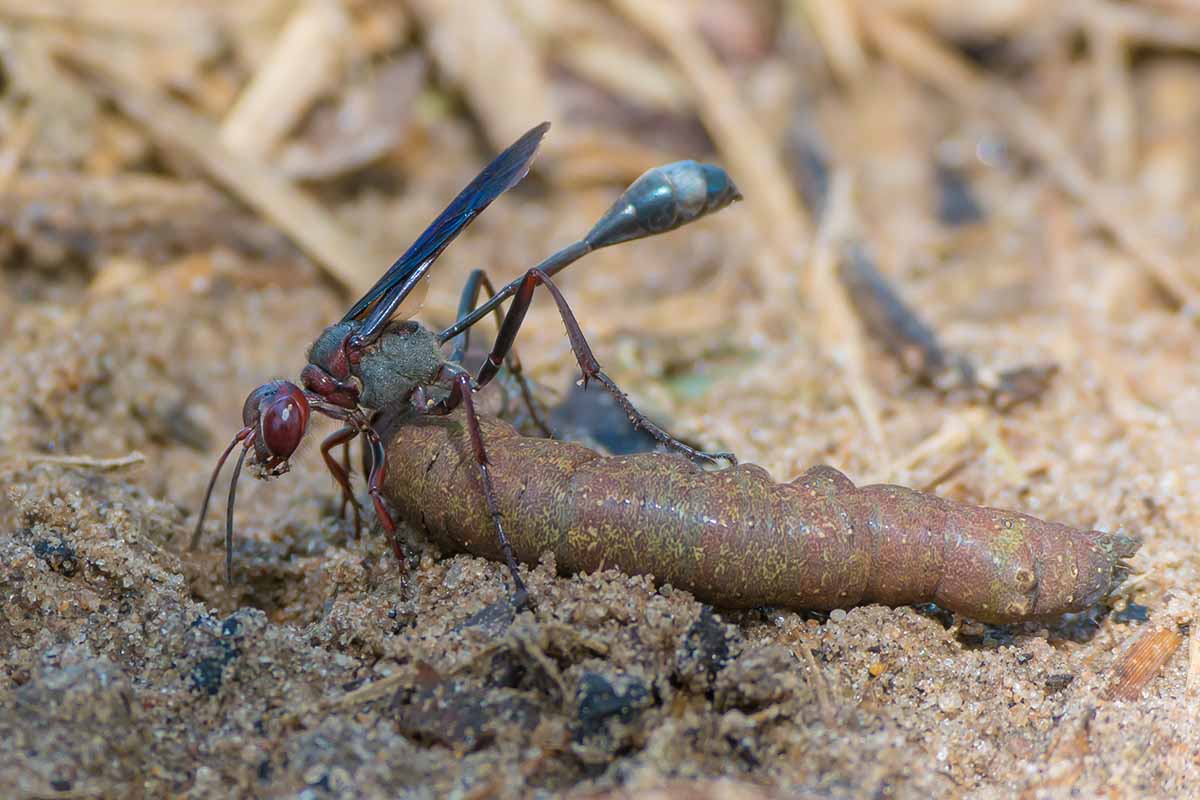
Common beneficial predators include aphid midges, ground beetles, lacewings, ladybugs, parasitic wasps, and syrphid (hover) flies.
If your garden doesn’t have its own predatory insects, they can easily be introduced. You can find a variety of beneficial predators at Arbico Organics.
Botanical Insecticides
Botanical insecticides are made from plant derivatives that can be highly effective and even more toxic to pests than some synthetics.
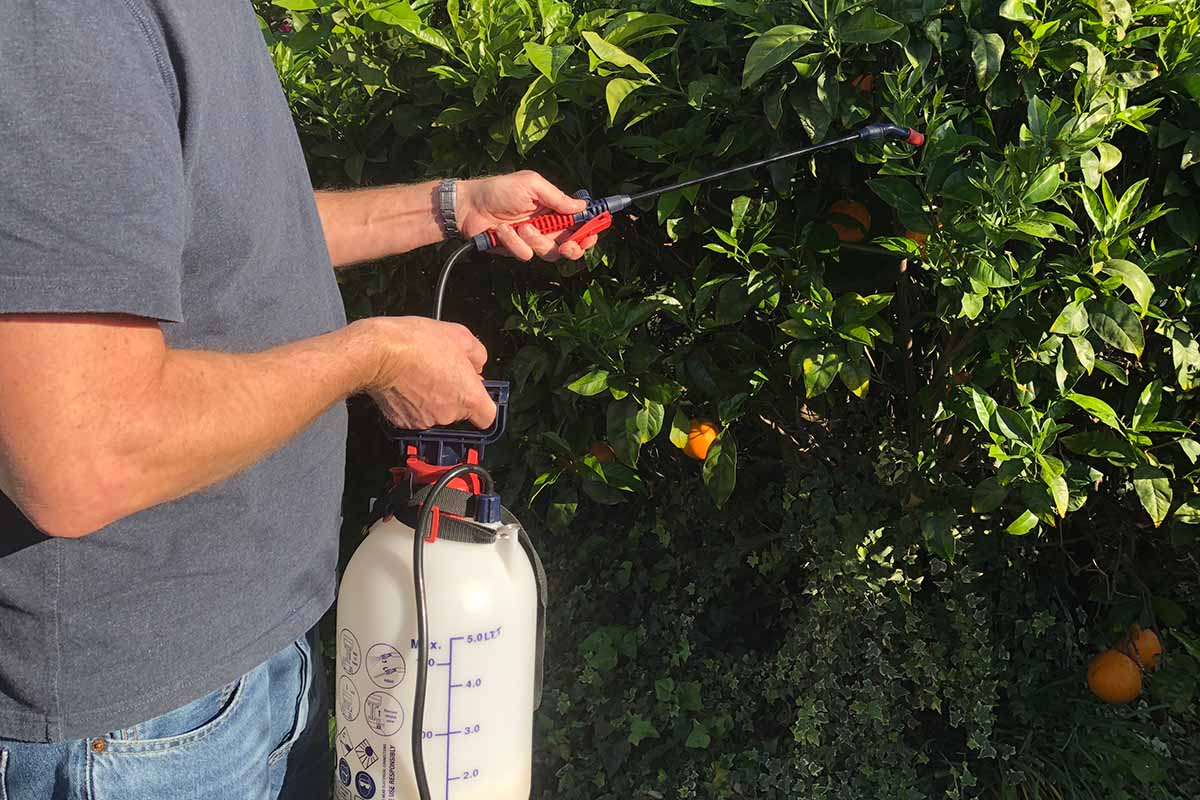
However, botanical insecticides break down quickly and do not accumulate in the soil or food chain as synthetics do.
Neem oil is one such botanical insecticide that can be used as a fungicide as well, tackling problems ranging from powdery mildew to whiteflies.
It’s available at Arbico Organics.
Diatomaceous Earth
An excellent organic insecticide, diatomaceous earth (DE) is an abrasive white powder made from diatomic fossils that causes dehydration in insects when they contact it.
And the sharp particles also cause small skin tears to pests like mollusks, making it highly effective against the likes of slugs and snails.
Our guide to using diatomaceous earth for pest control has all the details.
Floating Row Covers
Floating row covers provide an easy and inexpensive way to exclude pests, prolong the growing season, and provide protection from the elements, but they are permeable to air, sunlight, and water.
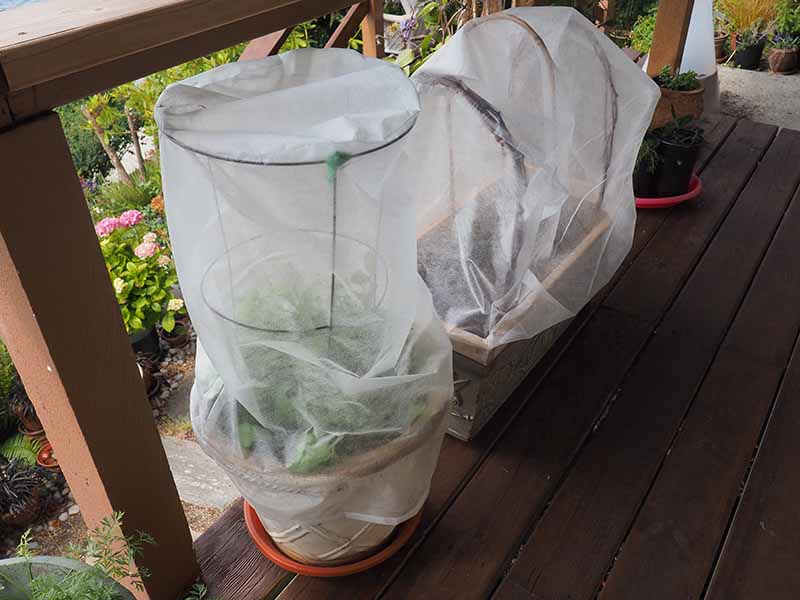
Made of a spun or woven polyester, this lightweight material is easily supported by hoops and anchored in place with stones or tent pegs, and can also be sewn into covers for planters of any shape or size.
In recent years, I’ve fashioned bonnets and chuckwagon covers for susceptible container veggies, and they’ve been 100 percent effective against the likes of the cabbage white butterflies, cutworms, deer, slugs, and whiteflies! If you don’t sew, a stapler and double-sided tape also works.
Garden Sulfur
Garden sulfur is one of the oldest known pesticides and also an effective fungicide.
An important weapon in organic gardens, it can be used to control pests like chiggers, spider mites, psyllids, and thrips as well as pathogens such as those that cause black spot, powdery mildew, and rust.
Hi-Yield Dusting Sulfur is available in four-pound bags at Nature Hills Nursery.
Green Manure
Green manure crops, or cover crops, are grown primarily for the purpose of increasing the soil’s nutritional value, improving tilth, and pest control.

They’re typically cultivated to be plowed under while they’re still green, or just before they start the seeding process, providing plenty of nutrients, healthy residues, and pest-busting properties.
Common green manure crops include brassicas such as arugula, canola, and forage radish; grains and grasses such as barley, annual ryegrass, and winter wheat; and legumes like cowpeas, red clover, and hairy vetch.
Cover or green manure crops are a valuable and easy option to improve your soil. This guide has the lowdown on 15 of the best cover crops for the home garden.
Trap Crops
Trap crops are used as a decoy to entice pesky insects away from your main crop, so they can be destroyed or eliminated.
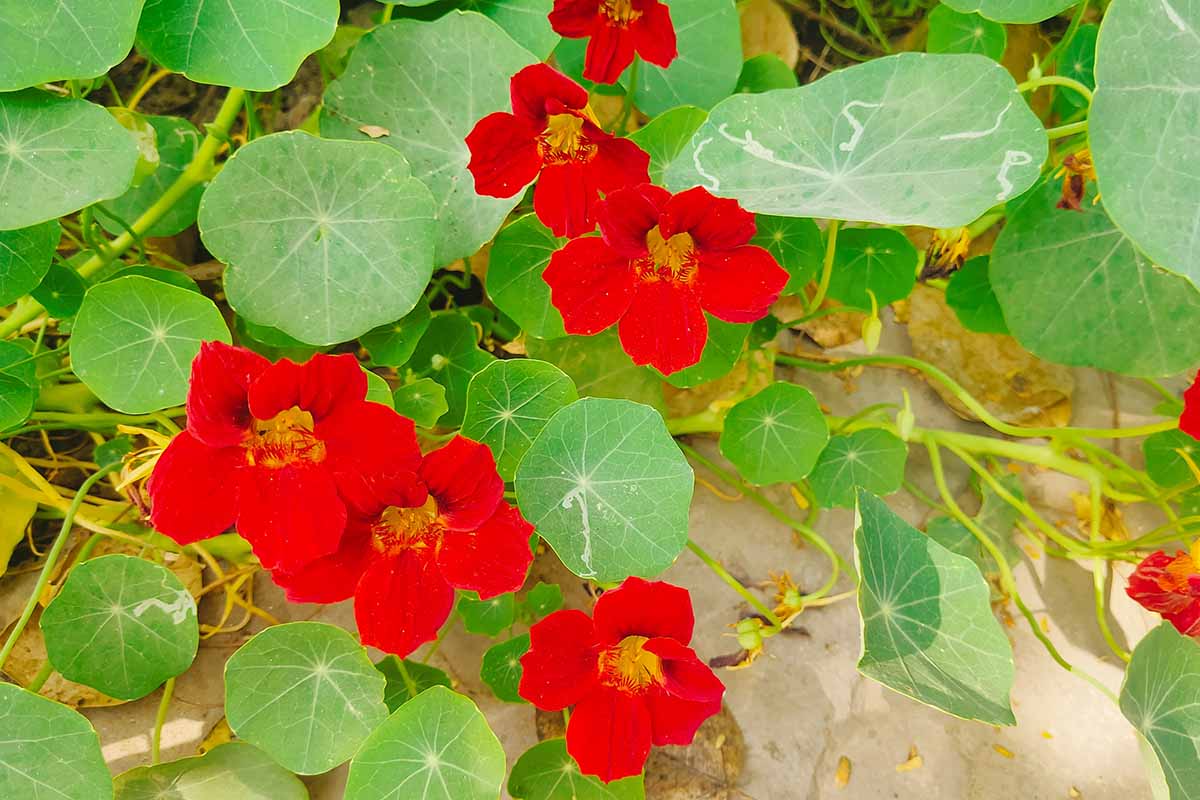
Mainly used in large-scale operations, the home gardener can also benefit from trap crops planted around the perimeter of a veggie patch.
The type of plant used as a trap depends in part on the main crop, as different plants attract different bugs.
For example, marigolds attract root-knot nematodes and can be used to protect cucumbers, eggplant, and tomatoes while zinnias can trap the Japanese beetles attacking your asparagus or roses.
Here’s where you can find the lowdown on how to use trap crops as decoys.
Sanitation Steps
Garden sanitation is of huge importance in managing pests and disease in the organic garden.
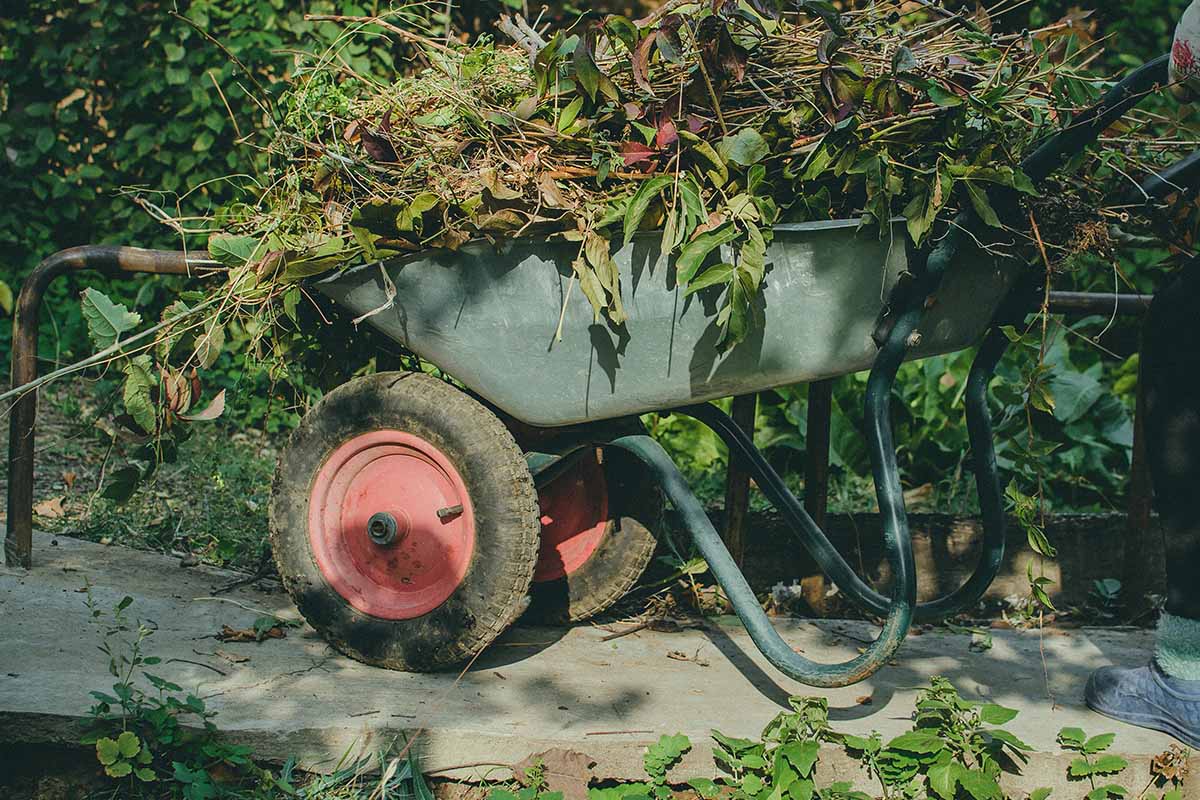
Problem pathogens and insects can live on in the soil or plant matter, or hide under bits of waste. And they often overwinter in place, creating a whole new season of problems when given the opportunity.
The most effective treatment is prevention, which starts with scrupulous hygiene practices.
You can help keep problems at bay with these sanitation steps:
- Promptly rake and discard fallen leaves and plant debris from under infected plants as needed.
- Promptly cut out and destroy infected branches, leaves, stems, or plants as problems occur. Don’t wait for the “right” time of year to prune out problems.
- When pruning infected plants, disinfect loppers, pruners, and shears between each cut by dipping them in a 10 percent bleach solution, using one part bleach to 9 parts water.
- Throughout the growing season, disinfect cutting equipment weekly with a 10 percent bleach solution.
- All infected materials need to be disposed of in the trash or burned – avoid putting any suspect materials in the compost.
- Clean all beds by mid-autumn and do another cleanup in late winter. Before new growth starts, I like to use a propane weed torch to burn weeds and remaining plant matter because the flames also destroy overwintering pathogens.
By being scrupulous with garden hygiene, you’ll keep many common problems at bay.
Seeds and Plants
To ensure your garden stays true to your chemical-free and synthetic-free vision, the seed and plant stock you choose needs to come from natural, untainted sources that are also grown organically.
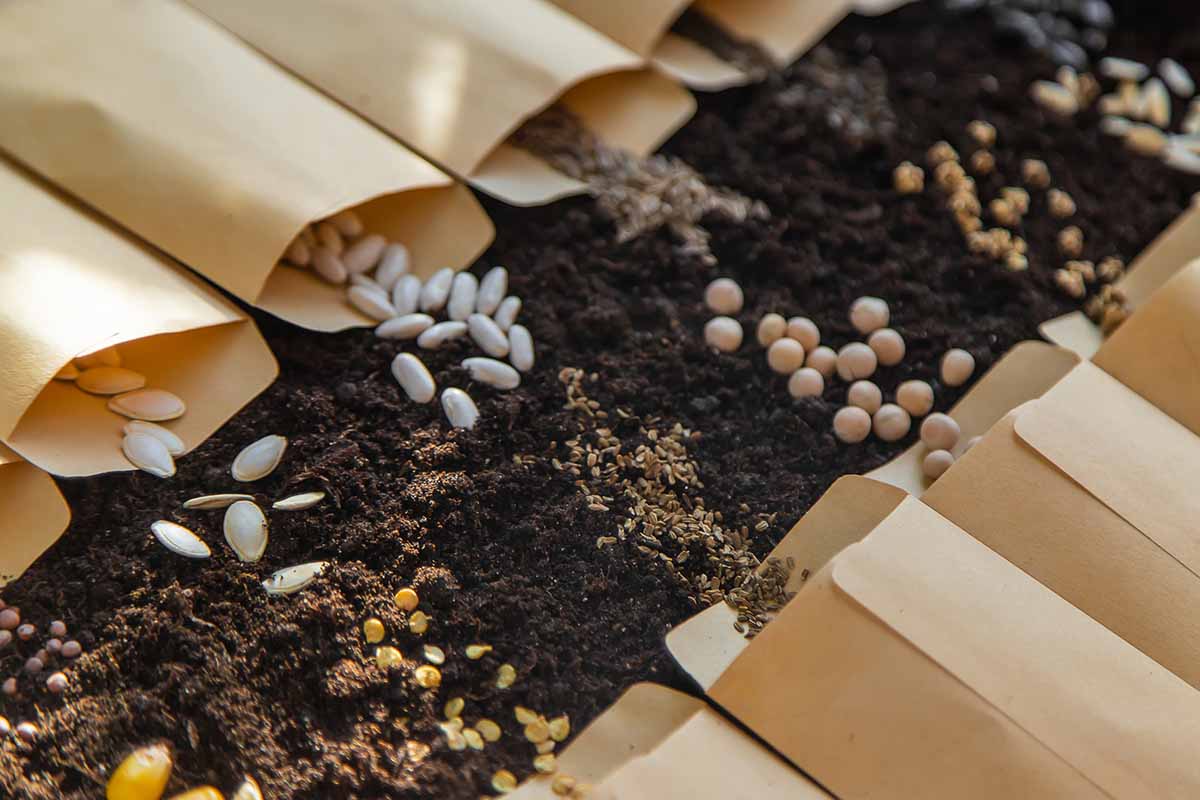
Each country has its own set of organic standards commercial growers must adhere to for certification, such as the Canadian Organic Standards and US Organic Grades and Standards, and the home gardener can apply the same standards for all-natural stock.
In a nutshell, organic seeds need to meet the following criteria:
- They must be grown without the use of synthetic chemicals.
- They must come from crops grown without the aid of synthetic fertilizers or pesticides.
- They must be non-GMO.
- Unlike conventional seeds which are often treated with antimicrobials or insecticides to improve storage conditions, germination, and growth, they must be untreated.
It’s common sense really – organic seeds and stock are natural and grown without the use of chemicals and synthetics.
Plant for Pollinators
The absolute best workmates you can have in your garden, organic or conventional, are a host of diverse pollinators.

Pollinators are essential for the healthy development of herbs, flowers, fruits, and vegetables, as well as seed production.
And many pollinators do double duty, providing effective pest control as well. Bats are outstanding at keeping mosquito populations in check and ladybugs are aphid-devouring machines!
The more diverse the list of pollinators in your garden, the better.
To attract helpful pollinators and pest control experts like bats, bees, beetles, birds, butterflies, dragonflies, flies, hummingbirds, moths, toads, wasps, and small mammals, provide them with the basics of food, shelter, and water in a pesticide-free environment.
Plant a wide range of nectar-rich flowers like the ones in our guide on how to attract pollinators and provide the habitat they need to stick around.
You can try your hand at building your own bat boxes or put up a mason bee hotel, like this cute bamboo teardrop structure from Gardener’s Supply Co.
A supply of fresh water for friendlies like birds, insects, and small mammals is also needed.
Birdbaths and ponds provide for birds and mammals, but flying insects might need a little help – they drown easily without a landing spot.
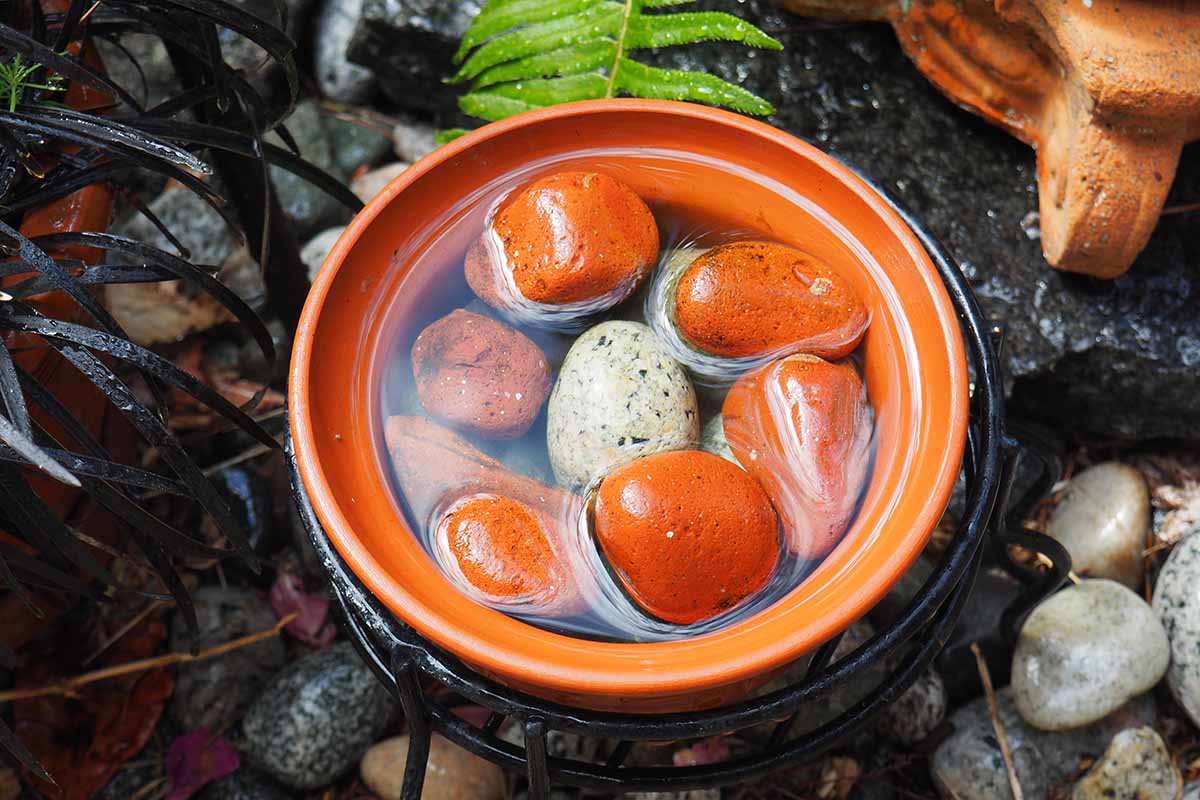
If you’re finding dead bees in standing water, fill a bowl or dish with water and add bricks, marbles, or stones to create small islands that break the surface – this gives them a way to walk to the water and not have to hover while drinking!
Synthetic-Free and Green for Me!
Creating an organic garden is a simple process, but that doesn’t always make it easy.
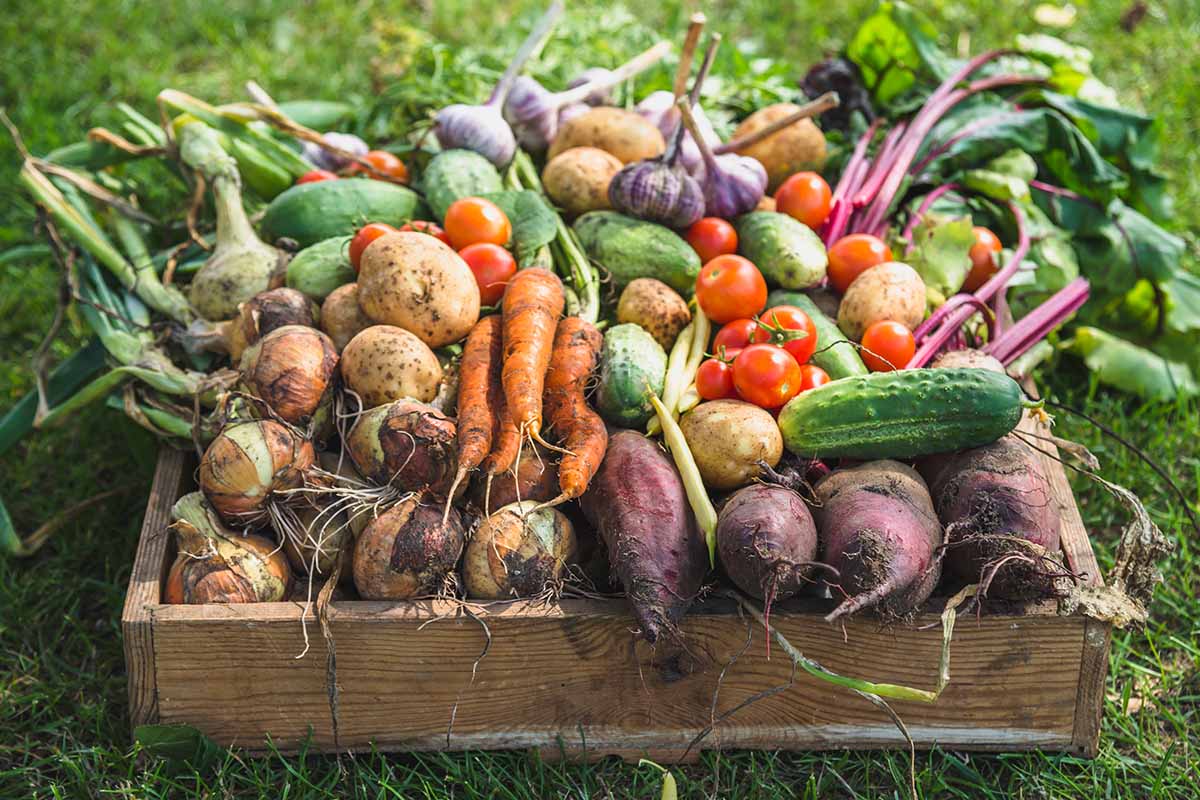
Along the learning curve, you’ll need to break the habit of reaching for synthetic fertilizers and pesticides, and adopt natural methods that work with nature to feed your plants and keep the pests away.
It takes a bit more planning to work in smart techniques like rotating green manure crops with your flowers, fruits, and veggies.
But your extra efforts will be richly rewarded with healthy and delicious, naturally grown food for your family that also benefits the environment – even if there is a blemish or two!
Any questions about getting started with organic gardening? Drop us a note in the comments section below.
And for more organic gardening ideas, check out these guides next:

